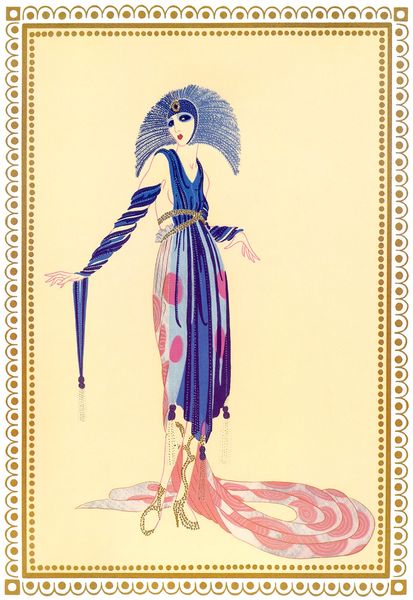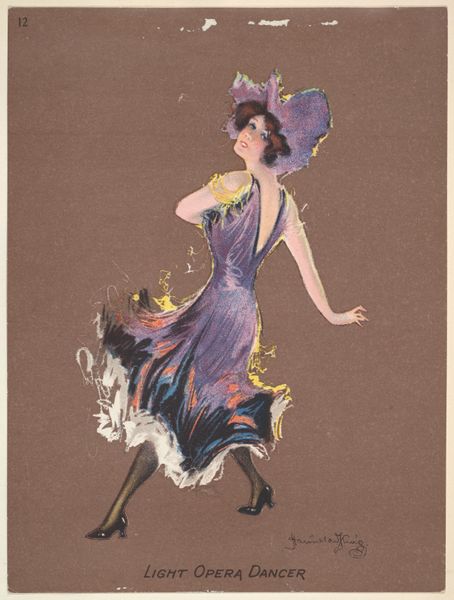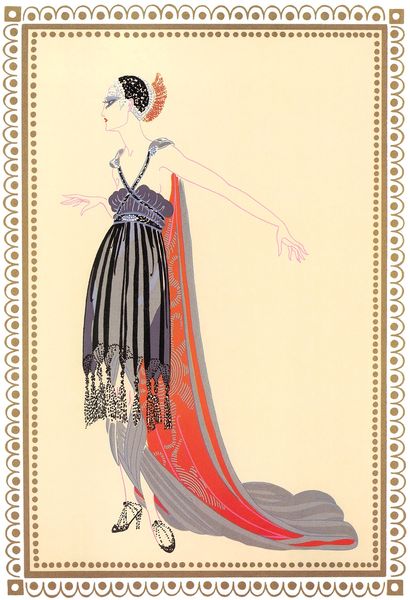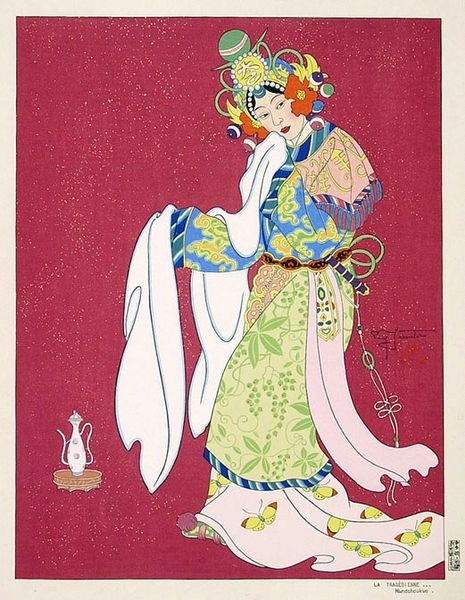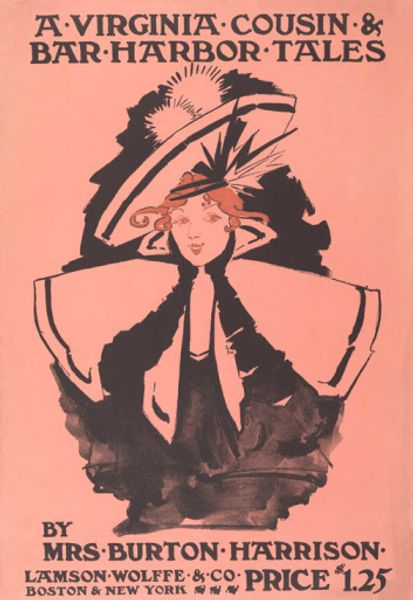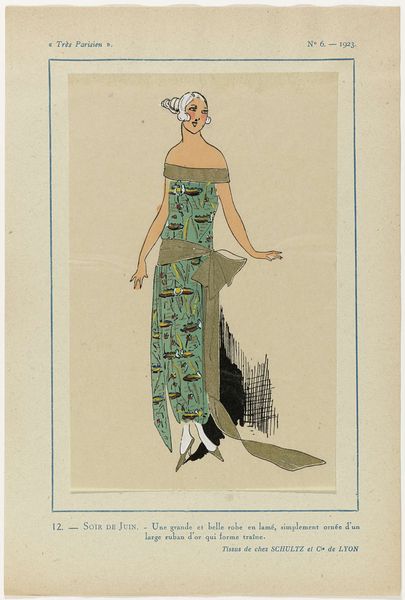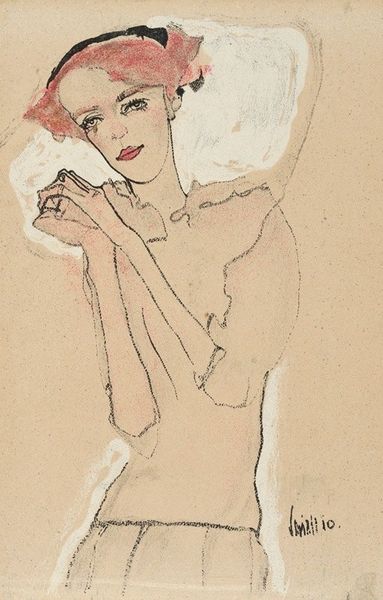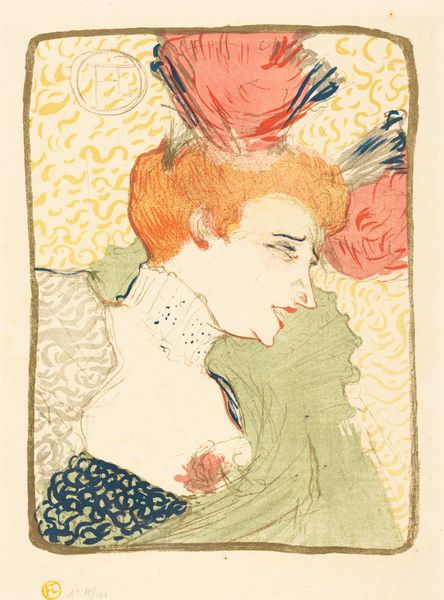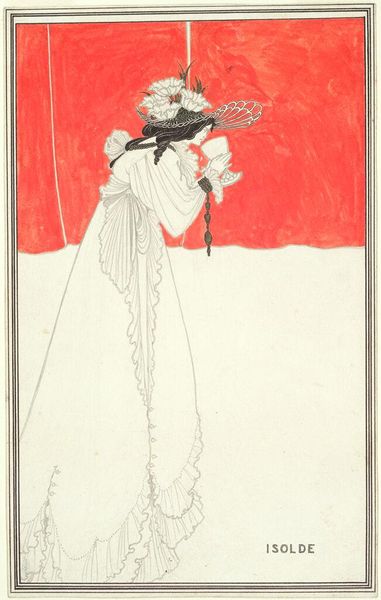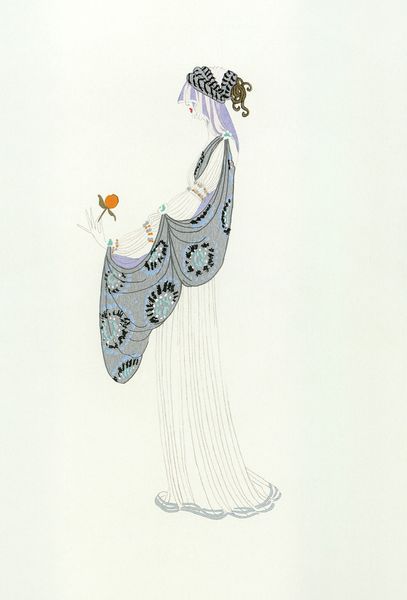
#
pop art-esque
#
cartoon like
#
cartoon based
#
egg art
#
caricature
#
pop art
#
bubble style
#
cartoon style
#
cartoon carciture
#
cartoon theme
Copyright: Public Domain: Artvee
Editor: This is "Femme Élégante," by Gerda Wegener, created around 1920. The stylized, almost cartoonish depiction of the woman feels both playful and unsettling. What can you tell me about this work? Curator: It's fascinating how Wegener uses art deco aesthetics to present what seems like a satirical critique of aristocratic femininity. Note the exaggerated features – the elaborate feathered hat, the powdered wig, and the overtly delicate pose. Do you see any dissonance there? Editor: Yes, it's almost like a performance, an exaggeration. But of what? Curator: Perhaps of the rigid gender roles and societal expectations placed on women during that era. Consider the historical context: The 1920s was a time of great social upheaval, with women fighting for suffrage and greater autonomy. Wegener, as a queer artist, might be subverting these norms by portraying this "élégante" with a sense of artificiality. What about the sharp angles and flat planes, versus the round form? Editor: It draws my eyes in. So you’re suggesting the cartoonish style might not just be decorative, but a way of distancing the viewer, of making us question what we're seeing? Curator: Exactly. And the almost theatrical composition, the way she’s framed within that oval, reinforces the idea of a constructed identity. It is an exaggeration. It really makes you think about who is being parodied and who gets to laugh. How does her status, as a woman portraying women, impact your impression? Editor: It definitely makes me wonder about the artist's intent – whether it’s a commentary from within or a critique from the outside. That changes everything, doesn’t it? Curator: It does. Wegener's work, when viewed through the lens of gender and social history, reveals layers of meaning beyond its surface elegance. We learn from how women chose to represent women. Editor: I never thought about it that way before, thanks!
Comments
No comments
Be the first to comment and join the conversation on the ultimate creative platform.
